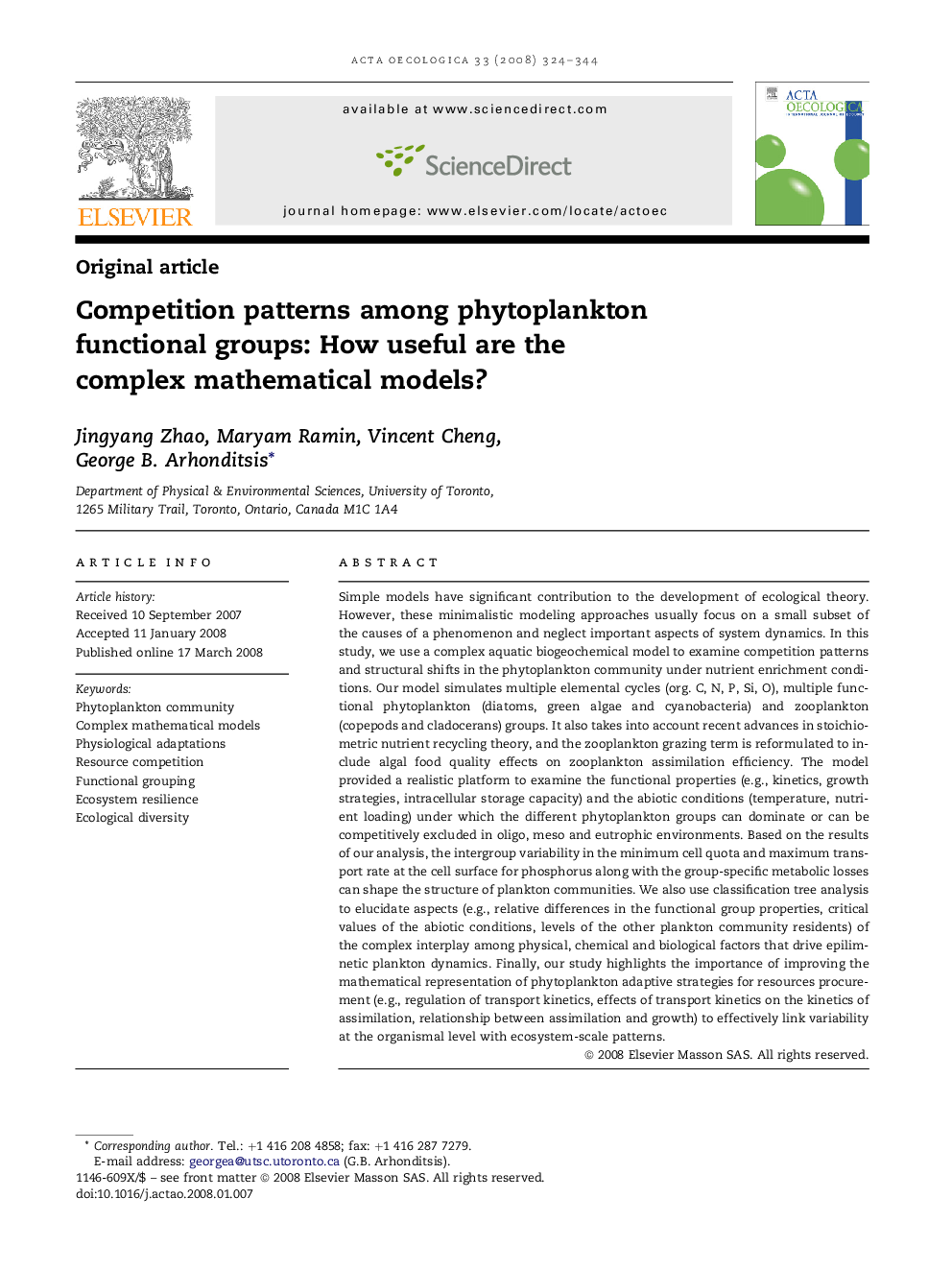| کد مقاله | کد نشریه | سال انتشار | مقاله انگلیسی | نسخه تمام متن |
|---|---|---|---|---|
| 4381554 | 1304079 | 2008 | 21 صفحه PDF | دانلود رایگان |
عنوان انگلیسی مقاله ISI
Competition patterns among phytoplankton functional groups: How useful are the complex mathematical models?
دانلود مقاله + سفارش ترجمه
دانلود مقاله ISI انگلیسی
رایگان برای ایرانیان
کلمات کلیدی
موضوعات مرتبط
علوم زیستی و بیوفناوری
علوم کشاورزی و بیولوژیک
بوم شناسی، تکامل، رفتار و سامانه شناسی
پیش نمایش صفحه اول مقاله

چکیده انگلیسی
Simple models have significant contribution to the development of ecological theory. However, these minimalistic modeling approaches usually focus on a small subset of the causes of a phenomenon and neglect important aspects of system dynamics. In this study, we use a complex aquatic biogeochemical model to examine competition patterns and structural shifts in the phytoplankton community under nutrient enrichment conditions. Our model simulates multiple elemental cycles (org. C, N, P, Si, O), multiple functional phytoplankton (diatoms, green algae and cyanobacteria) and zooplankton (copepods and cladocerans) groups. It also takes into account recent advances in stoichiometric nutrient recycling theory, and the zooplankton grazing term is reformulated to include algal food quality effects on zooplankton assimilation efficiency. The model provided a realistic platform to examine the functional properties (e.g., kinetics, growth strategies, intracellular storage capacity) and the abiotic conditions (temperature, nutrient loading) under which the different phytoplankton groups can dominate or can be competitively excluded in oligo, meso and eutrophic environments. Based on the results of our analysis, the intergroup variability in the minimum cell quota and maximum transport rate at the cell surface for phosphorus along with the group-specific metabolic losses can shape the structure of plankton communities. We also use classification tree analysis to elucidate aspects (e.g., relative differences in the functional group properties, critical values of the abiotic conditions, levels of the other plankton community residents) of the complex interplay among physical, chemical and biological factors that drive epilimnetic plankton dynamics. Finally, our study highlights the importance of improving the mathematical representation of phytoplankton adaptive strategies for resources procurement (e.g., regulation of transport kinetics, effects of transport kinetics on the kinetics of assimilation, relationship between assimilation and growth) to effectively link variability at the organismal level with ecosystem-scale patterns.
ناشر
Database: Elsevier - ScienceDirect (ساینس دایرکت)
Journal: Acta Oecologica - Volume 33, Issue 3, MayâJune 2008, Pages 324-344
Journal: Acta Oecologica - Volume 33, Issue 3, MayâJune 2008, Pages 324-344
نویسندگان
Jingyang Zhao, Maryam Ramin, Vincent Cheng, George B. Arhonditsis,